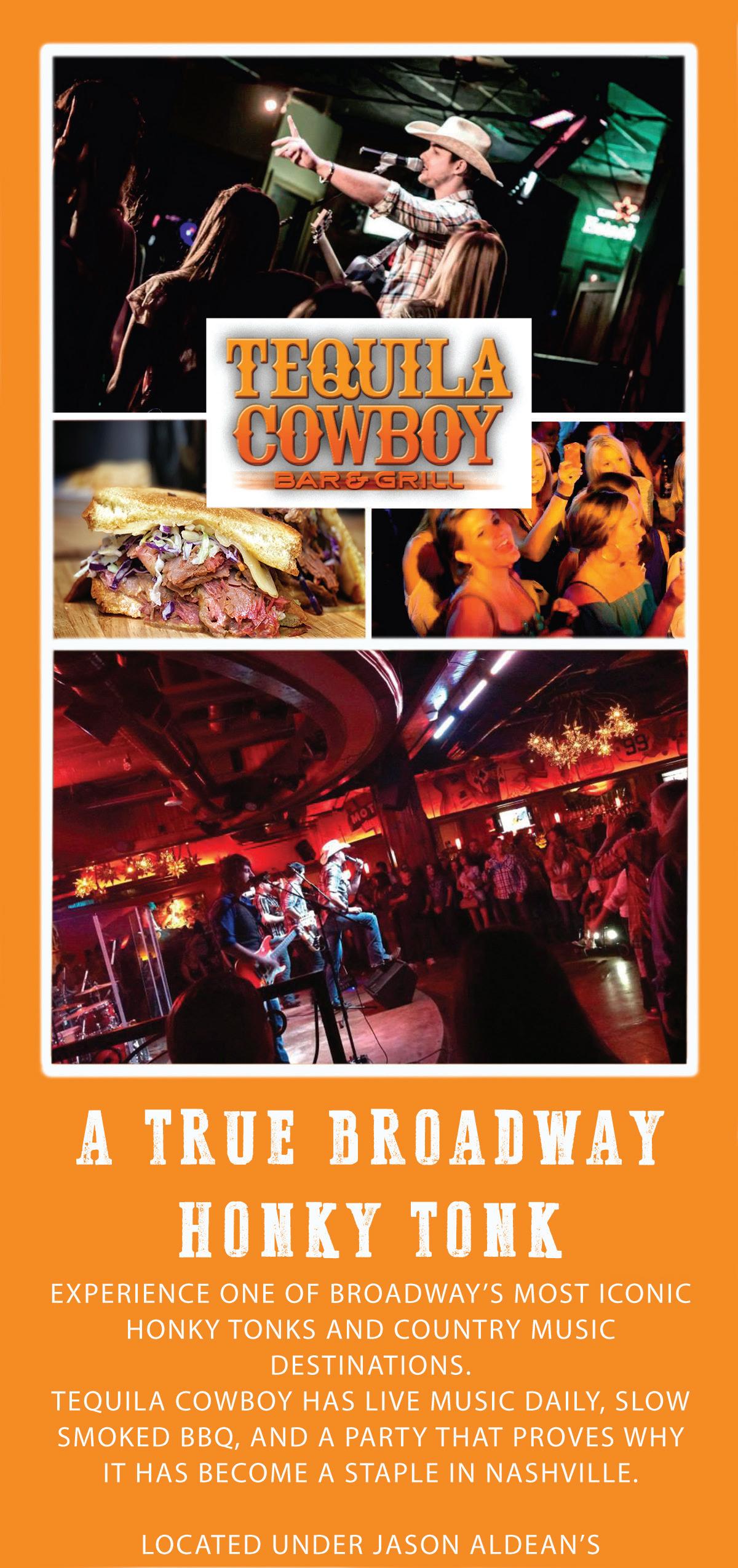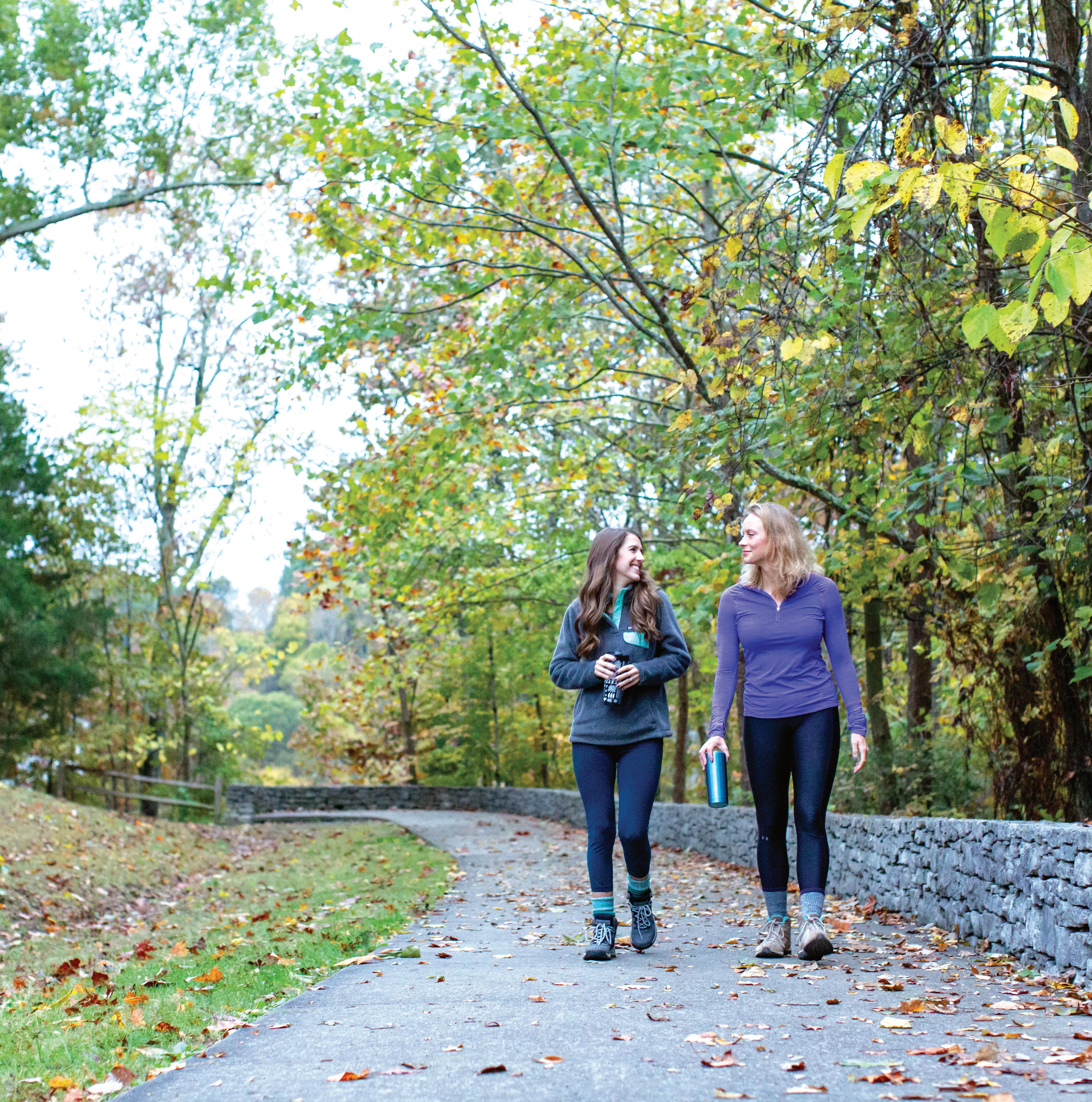
3 minute read
TUNE INTO THE NATCHEZ TRACE
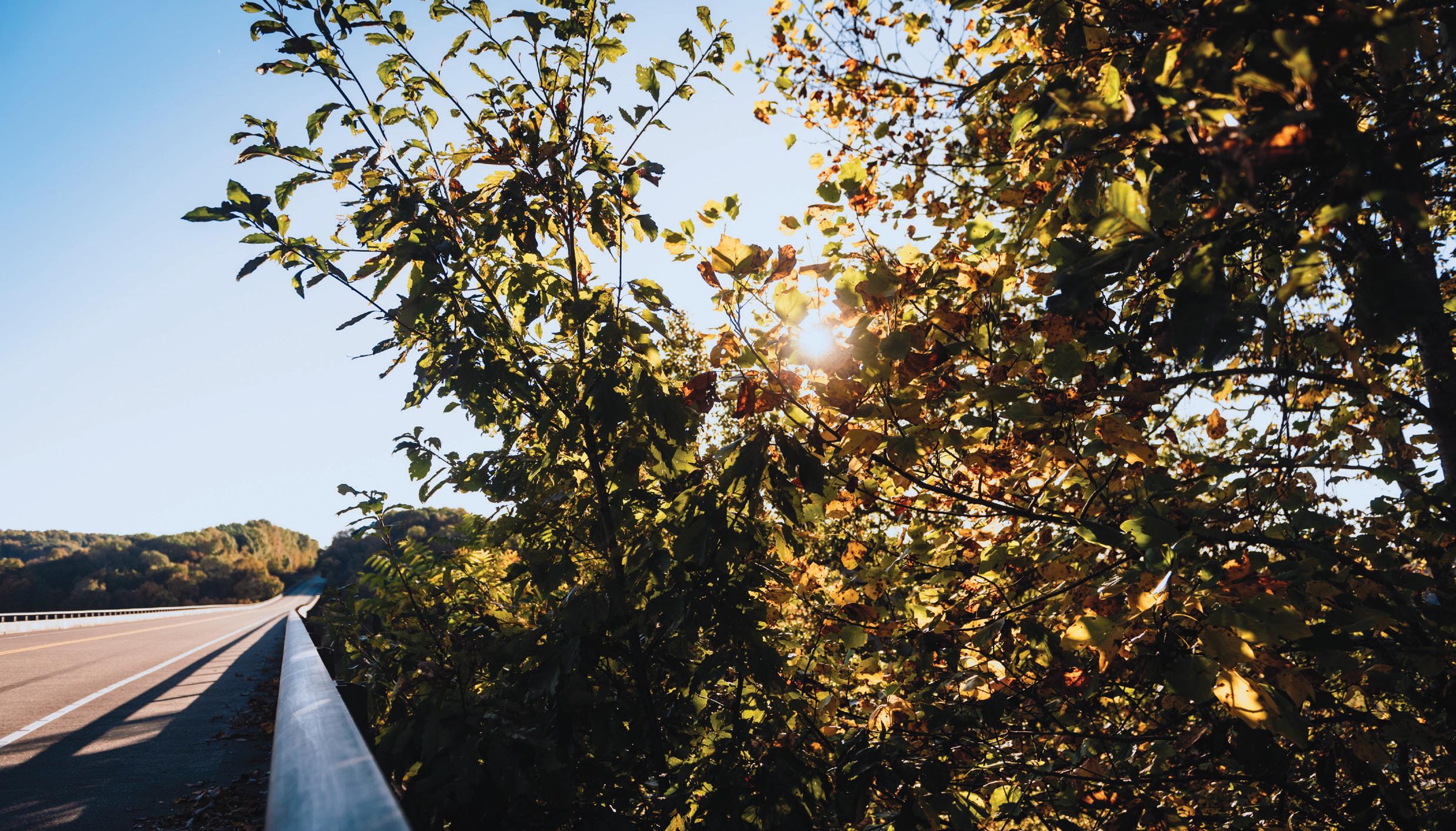
TUNE IN TO THE NATCHEZ TRACE
Leave your headphones in the hotel as you explore this 10,000-year-old corridor.
BY MADISON SULLIVAN
Awoodpecker’s solo splits through two songbirds’ duet. Rubble rumbles underfoot, and wheels whir along the pavement just out of sight. All of these things and more meld together to create the Natchez Trace Parkway’s siren song. But let’s rewind. The land where the parkway and its scenic trail are now has seen injustices and artwork, decline and growth. Once a network of trails—crossed by prehistoric animals, tribes such as the Natchez, Chickasaw and Choctaw, settlers and soldiers—in modernday, the parkway is one unit, split into five sections visited by millions, the National Park Service explains.
And it’s easy to explore this historic route, whether you’re looking to hike or bike it—or both. Pedego Electric Bikes Franklin offers rentals and tours, and travelers will appreciate their bike’s capabilities as they make their way from downtown along pastoral roads.
If the power to forgo pedaling isn’t enough to energize you, a stop at The RedByrd Coffee Shop in Leiper’s Fork
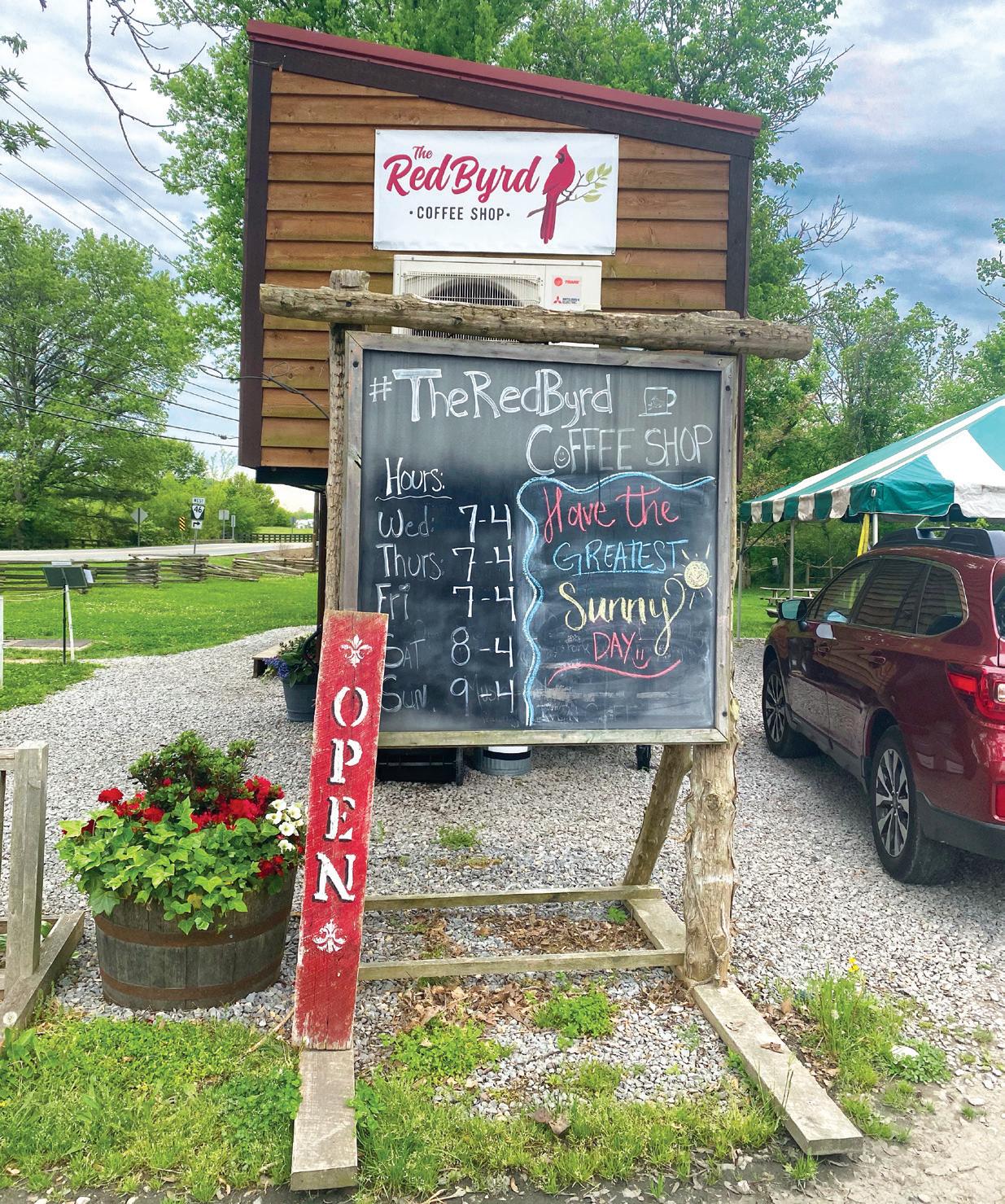
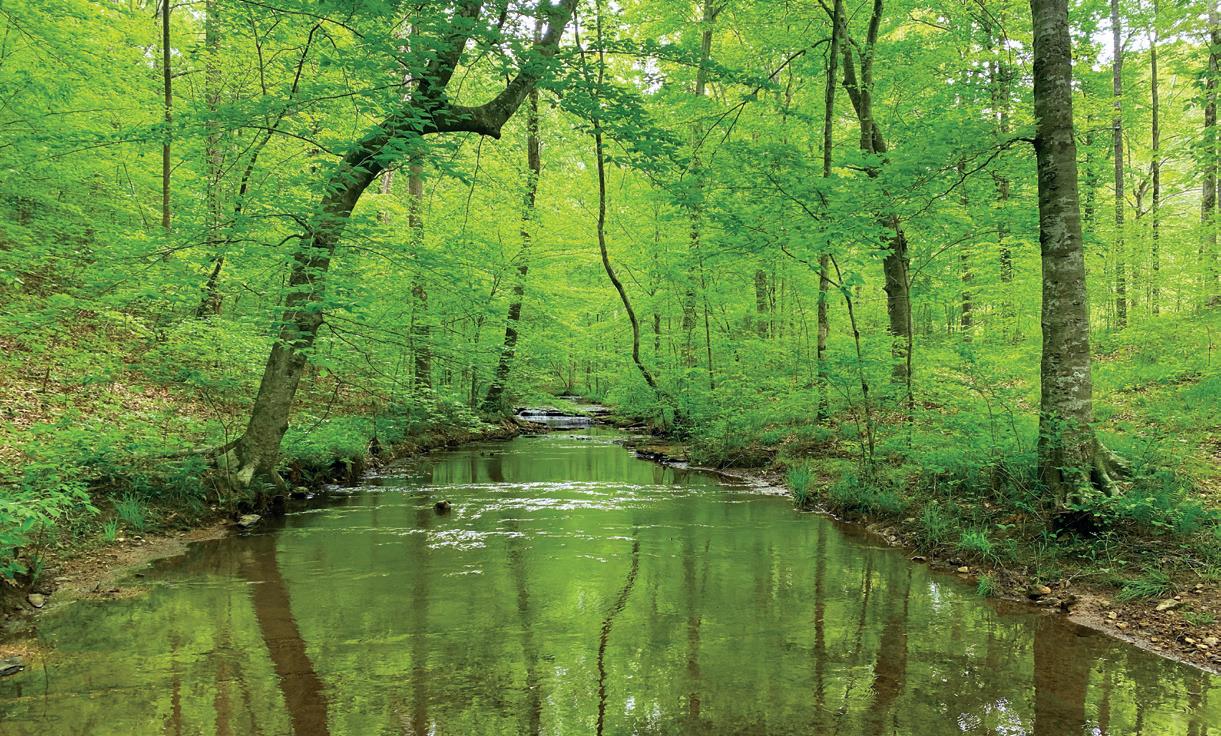
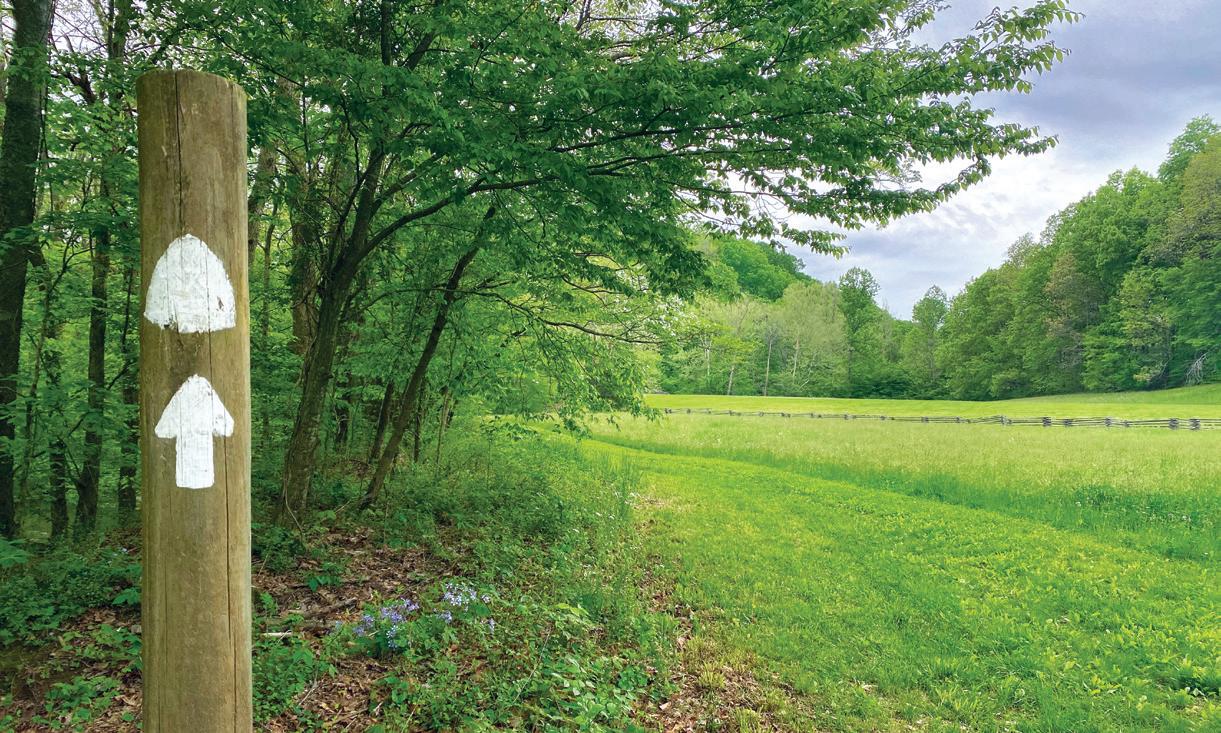
will do the trick. Sip a blackberry mocha at this charming roadside stop as bluegrass and Americana tunes drift from the speaker hung by the window.
Once caffeinated, hop back on your bike. Soon you’ll see a sign with arrows pointing in opposite directions: Nashville, 37 miles, Tupelo, MS, 169. Turn toward Tupelo.
You may be disconnecting from Music City, but you’re about to tune in to the sounds of the Highland Rim section.
Pull off at the Garrison Creek trailhead, lock your bike to the rack and start your journey on foot here. As the northern terminus of the 450-mile scenic trail, you’ll see everyone from boot-clad hikers to motorcyclists stretching their legs.
The trail is intuitive. While there is a myriad of markers—triangles reminiscent of moss, painted arrows on wooden posts, and faded metal signs—you won’t need them. One of the first and few navigation choices you’ll make while traversing this trail is at its base. Take the path straight on through the canopy of trees, and save the winding section to your left for the way back.
In less than a mile, you’ll reach an overlook. A silo, barn and hills spread out in panorama, and, of course, there’s the road. You’ll hear a rasping, and for a moment, you might look up to see if the leaves are rustling in the wind. A telltale bump, bump will give away what you’re hearing: a vehicle crossing a bridge—one of many you’ll see during your time on the Trace.
Make your way just a bit farther and pause. Here you can head one mile back to spend more time on two wheels, or you can press forward, following the out-and-back path.
If you choose to continue, you’ll notice horseshoe prints packing down the mud and pass through patches of downed trees, carved out by those tending the trail. When you reach the Old Trace clearing, make your way up to a
Opening spread: The Natchez Trace Parkway is a picturesque spot for a walk or a ride. Above, clockwise from left: The Red Byrd Coffee Shop; one of the eight major watersheds crossed by the Trace; charming signage along the trail. Opposite page: Foliage abounds along the Trace.
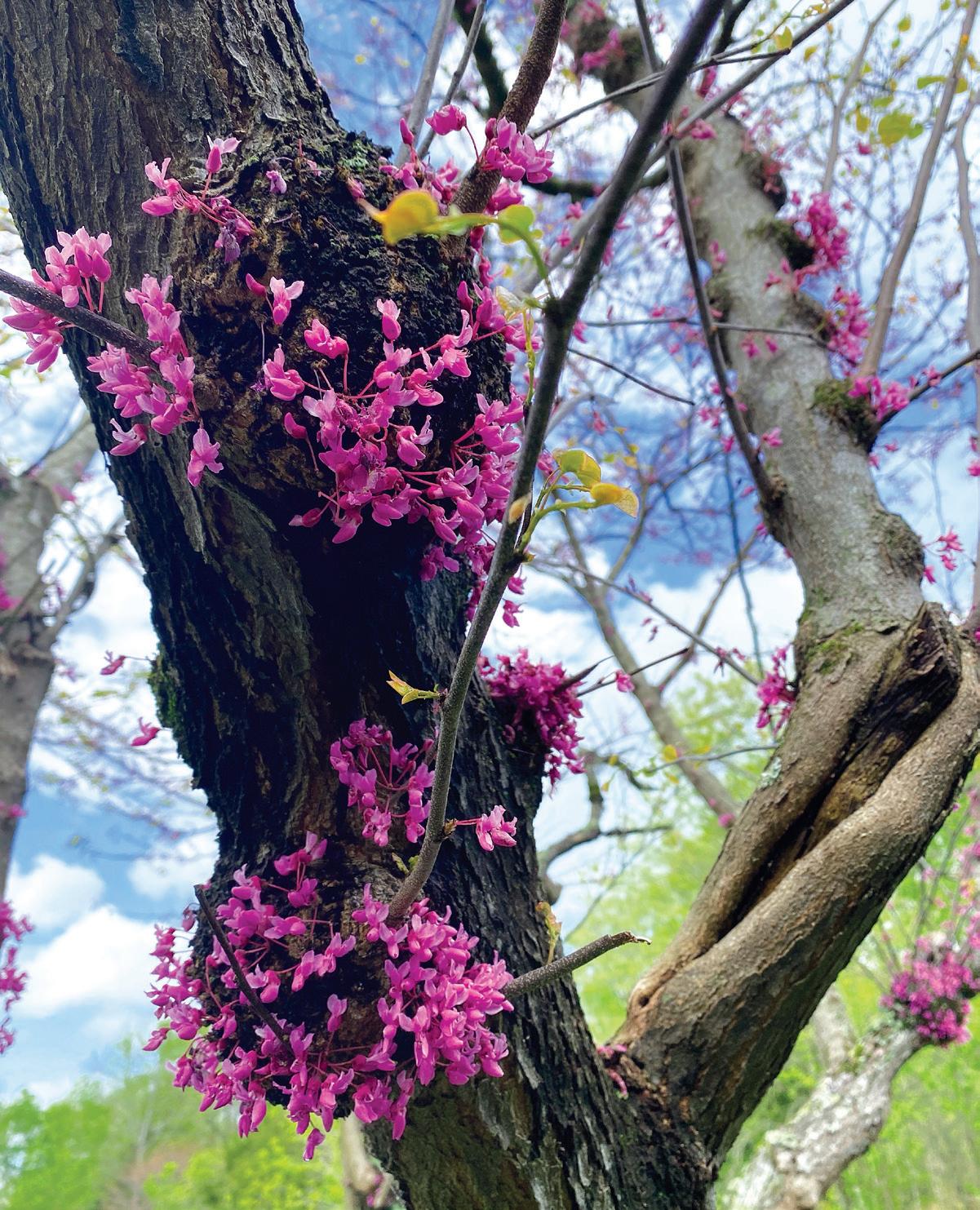
solitary monument. It’s covered in tokens—pennies and pebbles—left by those marching over the same ground during the War of 1812.
Dive back into the woods and you’ll start your descent. This section of the trail is characterized by ups and downs, but the hitch in your breath is worth it.
When you arrive at Burns Branch, you may be tempted to soak your tired toes. There’s no need. Those who make their way around the bend will find themselves crisscrossing crystal-clear creeks tinkling alongside the trail.
The farther you wander, the fewer people you see—and the louder nature becomes: the twang of a frog, the buzzing of a bee. From Tennessee Valley Divide on, the wilderness encroaches.
Suddenly you’ll reach Carter Road: the bridge. And, fittingly, you’ll see one, holding the parkway overhead, framing a dead-end sign. But with five miles until Garrison Creek, you’ve got a ways to go before you’re once again in Music City.
The Natchez Trace’s centuries-old soundtrack plays on.
